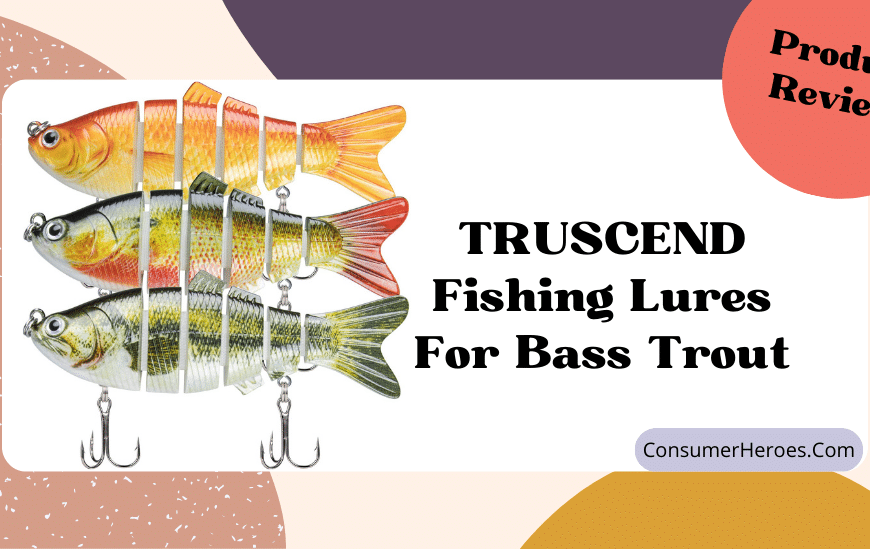When it comes to fishing, using the right equipment is essential to a successful catch. One piece of equipment that can make all the difference is a bobber. A bobber, also known as a float, is a small buoyant device that is attached to the fishing line. It serves as a visual indicator of when a fish has taken the bait and is ready to be reeled in.
Putting a bobber on a fishing line may seem like a simple task, but it can be tricky for beginners. The process involves threading the line through the bobber and securing it in place. There are different types of bobbers available, including slip bobbers and fixed bobbers, which require slightly different methods of attachment. In this article, we will provide step-by-step instructions on how to put a bobber on a fishing line, so you can improve your chances of catching fish on your next fishing trip.
Understanding Fishing Bobbers
Fishing bobbers are an essential tool for many anglers. They help to keep the bait at a specific depth and alert the angler when a fish takes the bait. Here are some key things to understand about fishing bobbers:
Types of Fishing Bobbers
There are several types of fishing bobbers available on the market. The most common types are:
- Round bobbers: These are the most basic type of bobber and are often used by beginners. They are round and come in various sizes.
- Slip bobbers: These bobbers slide up and down the line, allowing the angler to adjust the depth of the bait easily.
- Pencil bobbers: These are long, thin bobbers that are often used for fishing in deeper waters.
Choosing the Right Bobber
When choosing a bobber, it’s essential to consider the type of fishing you’ll be doing. Round bobbers are best for still water, while slip bobbers are better for moving water. Pencil bobbers are ideal for fishing in deeper water.
The size of the bobber is also important. A larger bobber will be more visible, making it easier to see when a fish takes the bait. However, a smaller bobber will be less visible and less likely to scare away fish.
Attaching the Bobber
Attaching a bobber to a fishing line is a simple process. First, tie a small knot in the line about 6-12 inches above the hook. Then, slide the bobber onto the line and adjust it to the desired depth. Finally, attach a split shot sinker to the line below the bobber to keep it in place.
Conclusion
Understanding fishing bobbers is essential for any angler looking to improve their fishing skills. By choosing the right bobber, attaching it correctly, and adjusting the depth, anglers can increase their chances of catching fish.
Choosing the Right Bobber
When it comes to choosing the right bobber for your fishing line, there are a few things to consider. The right bobber can make all the difference in your fishing experience, so it’s important to choose wisely.
Size
The first thing to consider is the size of the bobber. The size of the bobber will depend on the type of fish you are targeting. If you are targeting smaller fish, you will want a smaller bobber. If you are targeting larger fish, you will want a larger bobber. It’s important to choose a bobber that is large enough to support the weight of your bait and hook, but not so large that it will scare away the fish.
Shape
The shape of the bobber is also important. There are several different shapes to choose from, including round, egg-shaped, and pencil-shaped. Round bobbers are the most common and are great for beginners. Egg-shaped bobbers are more sensitive and can detect even the slightest nibble. Pencil-shaped bobbers are great for casting long distances and are often used in saltwater fishing.
Material
The material of the bobber is another important factor to consider. Most bobbers are made of plastic, but there are also wooden and cork bobbers available. Plastic bobbers are the most common and are great for beginners. Wooden and cork bobbers are more sensitive and can detect even the slightest nibble.
Color
Lastly, the color of the bobber can also make a difference. Brightly colored bobbers are easier to see in the water, which can help you detect when a fish is biting. However, if the fish are easily spooked, you may want to choose a more natural-colored bobber.
Overall, choosing the right bobber depends on the type of fish you are targeting, the shape of the bobber, the material, and the color. By taking these factors into consideration, you can choose the right bobber for your fishing line and improve your chances of catching more fish.
Types of Fishing Lines
Fishing lines come in different types, each with its own unique features and characteristics. The type of fishing line you choose will depend on the type of fish you are targeting, the fishing technique you are using, and the fishing environment. Here are some of the common types of fishing lines:
Monofilament Fishing Line
Monofilament fishing lines are made from a single strand of nylon or other materials. They are popular among anglers because they are affordable, easy to handle, and have good stretch and shock-absorbing properties. They also come in different colors, making it easy to see the line in the water. However, monofilament lines tend to have more memory, meaning they can retain the shape of the spool and become twisted over time.
Braided Fishing Line
Braided fishing lines are made from woven fibers, such as Spectra or Dyneema. They are known for their high strength-to-diameter ratio, making them ideal for catching large fish. They also have little to no stretch, allowing anglers to feel even the slightest bite. However, braided lines are more visible in the water, which can make fish more cautious, and they can be more difficult to handle due to their stiffness.
Fluorocarbon Fishing Line
Fluorocarbon fishing lines are made from a type of plastic that is nearly invisible in the water. They have low stretch and are abrasion-resistant, making them ideal for fishing in rocky or weedy areas. They also sink faster than other lines, making them suitable for fishing at deeper depths. However, fluorocarbon lines tend to be more expensive than other types of lines and can be more difficult to tie knots with.
Overall, choosing the right type of fishing line is crucial for a successful fishing experience. Anglers should consider the type of fish they are targeting, the fishing technique they are using, and the fishing environment when selecting a fishing line.
Preparation Before Attaching a Bobber
Before attaching a bobber to a fishing line, it is important to prepare the necessary equipment and ensure that the fishing line is properly set up. Here are a few things to keep in mind before attaching a bobber:
Check the Fishing Line
It is important to make sure that the fishing line is in good condition before attaching a bobber. Check for any damage or weak spots, and replace the line if necessary. It is also important to make sure that the line is properly spooled on the reel and that there are no tangles or knots.
Select the Right Bobber
Choosing the right bobber is important for successful fishing. Consider the size and weight of the bobber, as well as the depth of the water and the type of fish being targeted. A larger bobber may be needed for deeper water or heavier fish, while a smaller bobber may be more appropriate for shallow water or smaller fish.
Prepare the Hook and Bait
Before attaching the bobber, make sure that the hook and bait are properly prepared. Choose the right hook size and type for the fish being targeted, and make sure that the bait is securely attached to the hook. It is also a good idea to add a split shot or sinker to the line to help keep the bait at the desired depth.
By following these simple steps, anglers can ensure that their fishing line is properly set up and ready to attach a bobber for a successful fishing trip.
Steps to Attach a Bobber to a Fishing Line
Attaching a bobber to a fishing line is an essential step in fishing, especially for beginners. A bobber is a small float that sits on top of the water and alerts the angler when a fish bites the bait. Here are the steps to attach a bobber to a fishing line:
- Choose the right bobber: Select a bobber that is the appropriate size and weight for the type of fish you are targeting. A small bobber is suitable for small fish, while a larger bobber is better for bigger fish.
- Tie the bobber stop: Slide the bobber stop onto the fishing line, approximately 6 inches above the hook. Tie the bobber stop in place by making a knot on the line. The bobber stop will prevent the bobber from sliding up and down the line.
- Attach the bobber: Slide the bobber onto the line below the bobber stop. The bobber should sit on top of the water and not sink. Adjust the position of the bobber according to the depth of the water and the type of fish you are targeting.
- Secure the bobber: Tie a small knot on the line below the bobber to keep it in place. Make sure the knot is tight enough to prevent the bobber from sliding up and down the line.
- Test the bobber: Cast the line into the water and watch the bobber. If the bobber sinks, it means the bait is too heavy, and you need to adjust the position of the bobber. If the bobber floats too high, it means the bait is too light, and you need to add more weight.
In conclusion, attaching a bobber to a fishing line is a simple process that requires a few basic steps. By following these steps, you can increase your chances of catching fish and enjoy a successful fishing experience.
Adjusting Bobber Depth
Adjusting the depth of the bobber is an essential skill to master for any angler. It allows the angler to present the bait at the desired depth, increasing the chances of catching fish.
To adjust the depth of the bobber, the angler needs to follow these steps:
- First, the angler needs to determine the depth at which they want to fish. This can be done by observing the water, looking for signs of fish activity, or using a depth finder.
- Next, the angler needs to adjust the bobber stop to the desired depth. The bobber stop is a small piece of plastic that slides up and down the fishing line. It is used to set the depth at which the bobber will float.
- To adjust the bobber stop, the angler needs to slide it up or down the fishing line until it reaches the desired depth. Once the bobber stop is in place, the angler can slide the bobber up or down the line to adjust the depth as needed.
- The angler should test the depth by casting the line and observing the bobber. If the bobber is floating at the desired depth, the angler can start fishing. If the bobber is too high or too low, the angler should adjust the depth by sliding the bobber up or down the line.
- The angler should continue to adjust the depth until they find the sweet spot where the fish are biting.
In conclusion, adjusting the depth of the bobber is an important skill for any angler. By following these steps, the angler can present the bait at the desired depth and increase their chances of catching fish.
Troubleshooting Common Issues
Even with the best preparation, issues can arise when putting a bobber on a fishing line. Here are some common problems and solutions:
Problem: Bobber keeps sliding down the line
If the bobber keeps sliding down the line, it may be because the line is too slick or the bobber is too heavy. To fix this issue, try one or more of the following:
- Use a bobber stop: A bobber stop is a small piece of rubber that is placed on the line above the bobber to keep it in place.
- Use a lighter bobber: A lighter bobber will be less likely to slide down the line.
- Add a split shot: A split shot is a small weight that can be added above the bobber to help keep it in place.
Problem: Bobber won’t stay upright
If the bobber won’t stay upright, it may be because the weight of the bait or lure is too heavy for the bobber. To fix this issue, try one or more of the following:
- Use a larger bobber: A larger bobber will be able to support more weight.
- Use a lighter bait or lure: A lighter bait or lure will be less likely to weigh down the bobber.
- Adjust the depth: If the bait or lure is too heavy, adjust the depth so that the bobber is not required to support as much weight.
Problem: Bobber won’t float
If the bobber won’t float, it may be because it is damaged or because it is not the right size for the weight of the bait or lure. To fix this issue, try one or more of the following:
- Replace the bobber: If the bobber is damaged, it will not float properly and should be replaced.
- Use a larger bobber: A larger bobber will be able to support more weight and may be necessary if the bait or lure is heavy.
- Use a lighter bait or lure: A lighter bait or lure will be less likely to weigh down the bobber and may be necessary if the bobber is small.
Safety Precautions
Before attaching a bobber to a fishing line, certain safety precautions should be taken to ensure a successful and safe fishing experience.
Firstly, it is important to check the fishing line for any signs of wear and tear. If the line is frayed or damaged, it should be replaced before attaching a bobber. This will prevent the line from breaking during the fishing process, which could result in injury to the fisherman or damage to the fishing equipment.
Secondly, when attaching a bobber to the line, care should be taken to avoid any sharp edges or hooks. The fisherman should use a pair of pliers to crimp the bobber onto the line, ensuring that the line is securely attached without any damage to the line or the bobber.
Thirdly, the fisherman should wear appropriate safety gear, such as a life jacket or waders, when fishing in deeper waters. This will prevent accidents and ensure that the fisherman is safe in case of any mishaps.
Finally, it is important to follow any local fishing regulations and guidelines to ensure that the fishing experience is safe and legal. This includes obtaining any necessary permits or licenses and following catch and release guidelines if required.
By following these safety precautions, the fisherman can ensure a safe and successful fishing experience when using a bobber on a fishing line.
Conclusion
Putting a bobber on a fishing line is a simple process that can greatly improve the chances of catching fish, especially for beginners. By using the right equipment and following the steps outlined in this article, anyone can successfully attach a bobber to their fishing line.
It is important to choose the right size and type of bobber based on the fishing conditions and the type of fish being targeted. Using a slip bobber can also be effective in deeper water or when fishing for larger fish.
When attaching the bobber to the line, it is important to ensure that it is secure and properly positioned. This can be done by using a bobber stop or by tying a knot above the bobber.
Overall, adding a bobber to a fishing line is a simple and effective way to increase the chances of catching fish. By following the steps outlined in this article and experimenting with different types of bobbers, anyone can become a successful angler.







